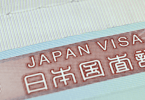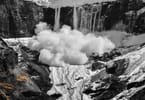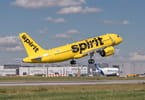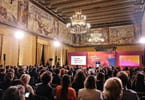The two Belgian tourists paused on the pathway near the Washington Monument to answer a question. Could they identify the towering white obelisk before them?
They examined their map. “We think, the Ellipse,” said Dien Haemhouts, 24, of Antwerp. Told their mistake, they laughed. “Ah, the Washington Monument,” Haemhouts said. “Okay.”
It was understandable. They had never been to Washington before. There was no sign nearby identifying the monument. And so the two tourists found themselves in the midst of a fresh debate: Do icons like the Washington Monument and Lincoln Memorial need signs announcing what they are?
The National Park Service, which is about to install an extensive new system of signs on the Mall, says yes. Many foreign and American tourists have no clue what they’re looking at or what to expect when they arrive, the Park Service says. Officials say, for example, that they often get calls from the public asking if there is a Nordstrom on the Mall.
But some members of the U.S. Commission of Fine Arts, which must approve the new sign system, as well as American tourists interviewed on a cold day last week, say no to such signs. “Just looking at it,” Minnie Glenn, 50, of Park Hall, Md., said of the monument. “It’s self-defining.”
The debate arises as the Mall is about to get a new $2.2 million sign system, funded by the federal government and the private Trust for the National Mall. Design research is underway, with a view to replacing the mishmash of signs on the Mall with a more uniform and user-friendly system that will probably use a series of color-coded pylons.
“There are hundreds of mismatched signs on the Mall,” Wayne Hunt, whose firm is researching the new system, told the arts commission last month at a meeting where proposed signs were reviewed. “The Lincoln Memorial has 44 mismatched signs.”
Across the Mall, there are signs with directions, signs with warnings, signs with rules. “Please Stay on the Sidewalks,” reads one at the Vietnam Veterans Memorial. “Quiet” is called for at the Lincoln Memorial. “No Guns or Ammunition,” says one near the Washington Monument.
When the question of formal signs came up, several commission members said signs seemed unnecessary and would be a blot on the landscape. “What does it say in front of the pyramids?” Pamela Nelson, vice chairman, wondered of Egypt’s famous tombs. “Is there a sign in front of the pyramids?”
Commission member Elizabeth Plater-Zyberk asked: “Do you need a sign in front of the Washington Monument? I don’t think so.”
In a letter to the Park Service, commission Secretary Thomas E. Luebke wrote that the commission “strongly discouraged the use of the monument-type sign to identify buildings and memorials on the National Mall.”
The Park Service thinks otherwise. “We have visitors who want to see all our buildings,” said Steve Lorenzetti, deputy superintendent of the National Mall and Memorial Parks. “But they don’t know what the Washington Monument necessarily looks like, or the Lincoln, or the Jefferson. They could be looking right at the Washington Monument and not realize that’s what it is.”
Hunt, of Hunt Design in Pasadena, Calif., said in an interview last week that “as a person who travels a lot around the world, I’m always comforted when even the obvious is identified. I’ve stood in front of the Lincoln Memorial many times and had people [say they were] not sure what it was.”
He said the Egyptian pyramids are, in fact, identified. “There’s a sign that says which pyramid it is,” he said.
“I think if you went around the world and looked at iconic destinations, you would find they are identified,” he said. “It reinforces visitors’ confidence in the place, and it closes the way-finding loop. It’s ‘Wow, I’m finally here.’ ” But, in deference to the arts commission, he said, work on icon signage will be deferred until later.
“We Washington insiders shouldn’t overestimate the people’s knowledge of the buildings and the history of this place,” said Harriet Tregoning, who heads the District’s planning office and represents the mayor on the National Capital Planning Commission. “It’s a little bit snobbish of us to assume that certain things are so well known people would not even need any direction to them.”
On the Mall last week, visitors were divided.
Bryan Goos, 37, of Urbandale, Iowa, on his first visit to Washington, said people ought to be able to identify things like the Lincoln Memorial without a sign.
“Maybe if you don’t know what it is, maybe that’s un-American,” he said Friday as he stood on the plaza of the Lincoln Memorial. “There are several buildings in America that I think you just know the name of them . . . the Washington Monument, the Lincoln Memorial, the Jefferson Memorial, the Capitol. Iconic symbols . . . I don’t think there needs to be a sign.”
But at the corner of 17th Street and Constitution Avenue NW, Edsel Anderson, 75, and his wife, Launa, 69, of Foley, Ala., could have used some help finding the World War II Memorial, about a block away.
“There’s nothing to say where it is,” he said, with the monument partly visible through the trees.
Did we need signs for such icons?
“Yes, we do,” said Launa.
“Now where is the Lincoln Memorial?” her husband asked.
Earlier, by the Vietnam Memorial’s Wall, French high school teachers Etienne Maquin and Francoise Lepiece, of the Notre Dame Saint Victor school in Epernay, said their students could have used better signs. They had just visited the Lincoln Memorial.
“For foreigners, the name of Lincoln is known,” Maquin, a history teacher said, “but who he was . . . is not always known.” He wished there might have been some foreign-language signs.
“Inside the Lincoln monument, there are, for example, all the speeches of Lincoln, which are written, and no translation for foreigners,” he said.
In France, he was asked, does the Eiffel Tower have a sign?
“Yes,” he said. “In several languages.”
WHAT TO TAKE AWAY FROM THIS ARTICLE:
- Design research is underway, with a view to replacing the mishmash of signs on the Mall with a more uniform and user-friendly system that will probably use a series of color-coded pylons.
- Luebke wrote that the commission “strongly discouraged the use of the monument-type sign to identify buildings and memorials on the National Mall.
- Commission of Fine Arts, which must approve the new sign system, as well as American tourists interviewed on a cold day last week, say no to such signs.






















